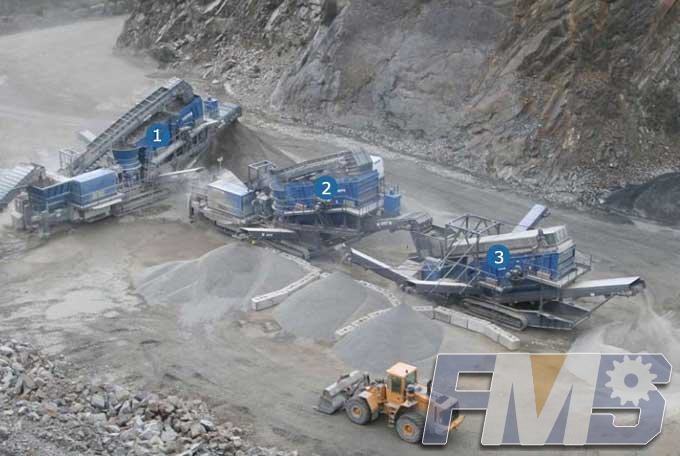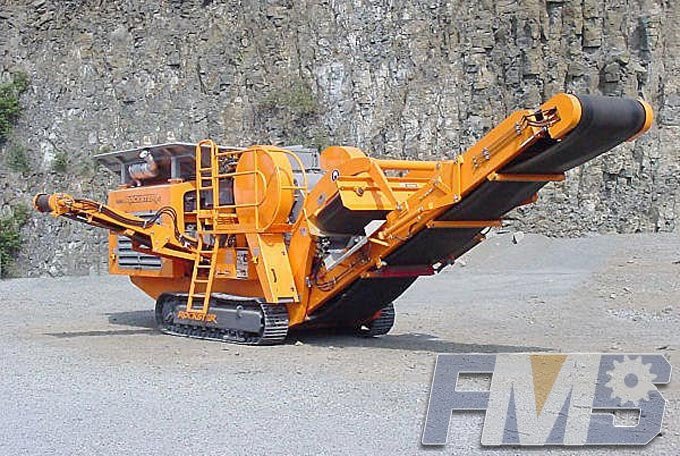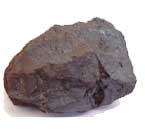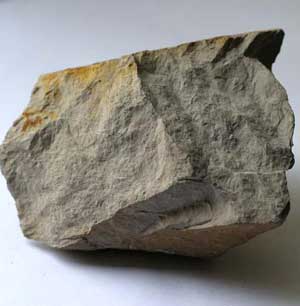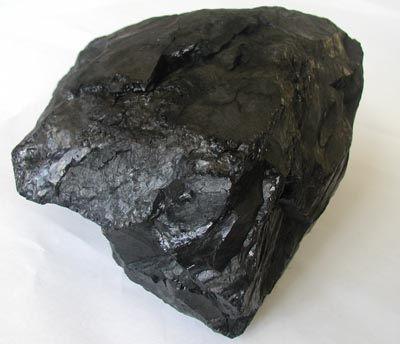Underground quarrying
In most instances production of aggregates by underground mining has been achieved by converting conventional quarries. Horizontal drifts or adits are driven into the quarry face to form the mine access or portal. The mining method usually employed is one of room and pillar whereby galleries of specified height and width are mined out parallel to each other separated by rib pillars, see Fig. 4.25. Employing room and pillar techniques 40-70% recovery of a single payrock horizon is usually feasible. In the most favourable circumstance two or three horizons of payrock may eventually be mined out in a concession area. Although the sequence of drilling and blasting, loading and hauling to primary crusher is applicable to underground mining, the equipment used is often significantly different. Drilling of headings or galleries is performed by multi-boom jumbo rigs on which two, three or four drifter type drills are mounted together on one carrier capable of being raised and lowered on hydraulic booms to reach the full height of the heading or room. Some rock formations allow galleries and rooms of such size and condition to be formed that conventional loaders and dumpers are used to lift and transport the shot rock to the primary crusher. Others, particularly where the overall height and room widths are likely to be restrictive, will employ purpose built LHD mine excavators. This equipment is specifically designed for underground operations and clearly has great advantages over conventional quarry methods not least that only one piece of machinery is used.
Tagged: Underground quarryingQuarrying
Get Detail Information:
(If you do not want to contact to our online customer service, please fill out the following form, Our client manager will contact you later. We will strictly protect your privacy.)


